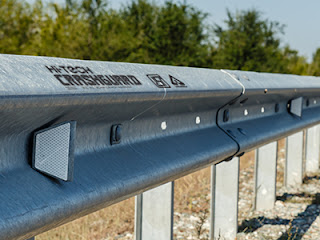The Essential Guide to GI Pipes: Durability in Piping
- Get link
- X
- Other Apps
Galvanized Iron (GI) pipes are a cornerstone in the construction and plumbing industries, recognized for their durability and corrosion resistance. These pipes are treated with a protective zinc coating, which extends their life and makes them suitable for a wide range of applications.
What are GI Pipes?
GI pipes, or Galvanized Iron pipes, are made of iron or steel coated with a layer of zinc, which protects them from corrosion and rust. This galvanization process ensures that the pipes have a longer lifespan compared to uncoated pipes. They come in various sizes and are often used in applications where water exposure is significant.
Manufacturing Process of GI Pipes
The manufacturing of GI pipes involves several key steps:
- Steel Production: The base material, typically steel, is first produced and shaped into pipes.
- Galvanizing: The pipes are then dipped in a molten zinc bath at high temperatures, which results in a robust, protective zinc coating.
- Quality Control: After galvanization, the pipes undergo rigorous testing to ensure their durability and resistance to corrosion.
Applications of GI Pipes
GI pipes are extremely versatile, finding uses in various sectors:
- Plumbing and Water Supply: Used extensively for water supply lines both in residential and industrial settings due to their corrosion resistance.
- Construction: Employed in outdoor and structural applications, such as fencing, railings, and scaffolding.
- Agriculture: Used for irrigation systems and water pipelines, ensuring longevity even under soil contact.
- Fire Protection Systems: Ideal for sprinkler systems because of their durability and resistance to high pressures.
Advantages of Using GI Pipes
- Corrosion Resistance: The zinc coating provides excellent protection against corrosion, essential for pipes exposed to moisture.
- Durability: GI pipes are known for their strength and ability to withstand environmental impacts.
- Cost-Effectiveness: While they are more expensive than some alternatives, their longevity and minimal maintenance needs make them a cost-effective choice over time.
- Recyclability: Steel and zinc are both recyclable materials, making GI pipes a more sustainable option.
Maintenance and Sustainability
- Maintenance Tips: Regular inspections for signs of wear and damage, especially at joints and bends, can help extend the life of GI pipes.
- Environmental Impact: Efforts are being made to improve the environmental footprint of galvanizing processes by reducing energy consumption and using more sustainable materials.
Future Trends in GI Pipe Usage
The future of GI pipes looks promising with advances in material science and galvanizing technologies:
- Improved Coating Techniques: New methods that apply thicker or more resistant coatings without compromising the pipe's performance are under development.
- Expansion in Applications: Innovations in manufacturing could open new uses in more demanding environments, such as high-salinity areas or extreme temperatures.
Conclusion GI pipes are an integral part of modern infrastructure, valued for their resilience and versatility. As industries push towards more durable and sustainable materials, GI pipes will likely continue to play a critical role in global development projects. Understanding the benefits and proper maintenance of GI pipes can help industries and consumers make informed decisions, ensuring longevity and performance in their piping solutions.
More Read: Gi pipe
- Get link
- X
- Other Apps

.png)

Comments
Post a Comment